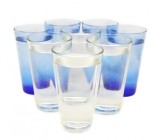 If you have adult acne, having some understanding of the way the skin functions can help you understand your condition.
If you have adult acne, having some understanding of the way the skin functions can help you understand your condition.
The largest organ of the body is the skin. It has a surface area of approximately around two square meters. It varies in thickness from around 0.5 mm on your eyelids to 4 mm on the palms of your hands and approximately 0.12 mm on your face.
This amazing sensory organ acts as a shield, protecting you from damage, infection and drying out; it can also be an indicator of your health, with glowing skin being a classic reflection of well-being.
The skin is composed of two layers. The outer layer is known as the epidermis, and the fibrous inner layer as the dermis. Underneath the dermis lies the subcutaneous fat. The words ‘epidermis’ and ‘dermis’ derive from the Greek word for skin, derma; hence, a skin specialist is known as a dermatologist.
The epidermis is the thin waterproof layer, visible to the naked eye. It is made up of three sub-layers. The cells in the deepest layer of the epidermis – the basal layer – constantly divide, producing new skin cells and ensuring your skin is continually renewed and replaced.
As these new cells are pushed upwards, older cells nearer the top die. They rise to the surface of the skin, known as the stratum corneum, where they are filled with keratin, a hard protein which also forms the finger and toe nails. These dead surface cells are then shed, usually invisibly, by this continual process, which takes approximately 60 days to complete.
The dermis lies directly underneath the epidermis and is permeable, which is why injuries like burns and grazes ‘weep’ when the epidermis is no longer there as protection. The dermis is approximately four times thicker than the dermis and is subdivided into two areas, the upper papillary region and the lower reticular region.
It contains proteins, the most common of which, collagen and elastin, give the skin its strength and flexibility. Other components include numerous specialized supporting tissues, blood vessels, nerves, hair roots and sweat glands. The ducts of these sweat glands pass through the epidermis to the surface to the surface of the skin.
In certain areas of the body, specialized sweat glands – apocrine glands – develop after puberty. White blood cells, which help to keep the skin clear of infection, are also found within the dermis, along with fine hairs that rise from follicles. Along the side of each hair follicle lies the sebaceous gland, which produces an oily substance known as sebum.
Sebum functions as a skin-softening agent (emollient), and as a protective agent against bacteria and fungi. When the sebaceous gland becomes inflamed or over secretes sebum, the gland opening becomes plugged, resulting in spots appearing on the skin.
Subcutaneous fat layer
Situated beneath the dermis is the subcutaneous fat layer. Composed of loose, fibrous connective tissue, clumps of fat-filled cells, blood vessels and nerves, this layer has an important insulating role in regulating body temperature, one of the skin’s most important functions.
Skin facts
- On average each 32 sq. mm (square half-inch) of skin contains:
10 hairs
15 sebaceous glands
100 sweat glands
1 metre of tiny blood vessels - The skin is thickest on the palms of your hands and the soles of your feet and thinnest on the lips and around the eyes.
- Your facial skin is approximately 0.12 mm thick and the skin on your body approximately 0.6 mm.
- The average adult’s skin has a surface area of approximately 2 sq. metres and weighs around 3.2 kg.
The social importance of skin
By definition, the skin on your face is usually under constant scrutiny. Faces are one of the most important visual tools in communication and, justly or not, people tend to be judged by their physical appearance.

A confident woman with clear skin
Any condition which changes or alters the skin can affect the way others react to it. This is a major factor in people’s experiences of acne. In a society where physical appearance is so important, anyone with facial skin disorders may be extra-sensitive to psychosocial rejection – even if it doesn’t actually happen.
Often, it isn’t the severity of the acne itself which is the problem, so much as the severity of the person’s psychological perception of the acne, or his or her reaction to having acne. An acute awareness that one’s skin is ‘atypical’ does often militate against relaxed socializing, and in some cases even affects work prospects.
Acne vulgaris affects approximately 80 per cent of teenagers at some stage during puberty, so the majority of teenagers have to cope with any social stigma this entails, real or perceived. This may mean avoidance – for example, not going to parties or discos, or not joining in with sports, particularly swimming, when you have to undress and expose your body.
Many older individuals suffering from acne may also find their enjoyment and participation in daily social activities restricted. It is not just teenagers who feel anxious about their looks, although until recently the psychological effects of acne were thought to be not nearly as traumatic as for young people.
But this view has now been rejected, as it has been better understood that acne can – and does – psychologically and socially affect an individual’s quality of life. For the increased number of adults experiencing acne, it is clear that acne not only scars the skin deeper than in younger people but also equally affects the psyche.
Many may lose self-confidence, become introverted and, in some cases, withdraw from others, not only socially but also from the workplace. Very often, over-obsession about their physical appearance and condition or state of their skin can lead to unresolved feelings of guilt, shame and embarrassment, as acne is often incorrectly regarded as a ‘dirty’ or ‘unhygienic’ skin condition.
This social stigma does little to relieve the stress or psychological distress of the person with acne, who ironically is probably one of the cleanest members of society; many try to scrub away their spots, which only make matters worse! What is more frustrating is the fact that acne can be treated and early treatment helps to reduce the difficulties and suffering that may occur with this skin disorder.
It is important to remember that the earlier acne is treated, the quicker and more successful the results.
According to the British Association of Dermatologists, attractiveness or beauty is considered to be ‘a visual impression of form or colour’. While beauty can be subjective, in any one particular society there is generally agreement as to who or what is beautiful.
Here in the Western world, the image of clear youthful skin and shiny hair is considered necessary in the quest for beauty. It is little wonder, then, that the beauty market, with its offers of creams, potions and lotions for wrinkle-free skin and clear complexions, is a growing multi-million-pound business.
Skin health
Your skin requires looking after, not just so that it is physically more attractive, but also because the healthier it looks, the healthier you are likely to be. Changes in the condition of your skin usually signify deterioration in your general health. A few spots or dry skin can be enough to suggest you are run down or suffering from stress, while sudden changes, such as dry skin, a change in skin colour, and cracked or sore skin, can suggest severe health conditions.
A nutritious diet, regular exercise, good-quality sleep and fresh air will do much to promote the health of your skin, while water also plays an important role in keeping the skin healthy. Almost two-thirds of our body is composed of water – 83 per cent of our blood is water, 74 per cent of the brain is water, 75 per cent of muscles are water, and even bones are composed of 22 per cent water – but our skin is composed of 90 per cent.
 It is no wonder we are encouraged to drink eight glasses of water a day to keep ourselves hydrated. Tea, coffee and fizzy drinks may taste good, but too much caffeine (which is added to some fizzy drinks) may adversely affect you and dehydrate you further, affecting the efficient and smooth functioning of all your body’s systems.
It is no wonder we are encouraged to drink eight glasses of water a day to keep ourselves hydrated. Tea, coffee and fizzy drinks may taste good, but too much caffeine (which is added to some fizzy drinks) may adversely affect you and dehydrate you further, affecting the efficient and smooth functioning of all your body’s systems.
Water helps to remove toxins and waste from the body, which makes your skin clearer, smoother and younger-looking. It literally moisturizes the skin from the inside out.
Most of the damage to skin, including pigmentation changes, thinning of the dermis, broken blood vessels and wrinkling of the skin, is caused by ultraviolet light, usually from the sun’s rays. And while age may cause wrinkles, there is much that can be done to lessen its effects.
Lifestyle factors such as smoking, poor diet, environmental pollution and over-exposure to the sun all contribute to damage and prematurely age the skin, and particularly the face.
So what is an acne?
Acne is a very common skin disease or disorder, which comes about as a result of blocked and inflamed skin pores. It varies in severity from a few spots on the face that may be embarrassing and reduce self-confidence to a more serious problem that causes scarring.
For the majority it lasts only a few years into the late teens or early twenties, but for some people it can persist much longer. It can affect people for the first time in their late twenties or even thirties, and in some cases occurs in babies.
Acne also known as Acne Vulgaris, is characterized by the appearance of comedones (blackheads and whiteheads), papules (infected spots) or pustules (pus-filled spots). Although there are several types of spot that differ in size, shape and colour, they all have one thing in common: they are all raised above the surface of the skin.
Why does acne occur?
Commonly, acne appears on the face, the neck, the chest, the back of the body and the arms, although it can appear anywhere on the body apart from the soles and palms. It is caused by a combination of factors, including
- The overproduction of sebum;
- Dead skin cells clogging up the hair follicles;
- A reaction to the bacteria Proprionibacterium acne (P. acnes)
Essentially, though, acne is a hormone-driven disease, with androgens (specialized male hormones) playing a leading role, though in most people with acne hormone levels are normal – the skin just over-reacts to them.
What appears to happen is that sebaceous glands of people with acne are more sensitive to normal blood levels of the hormone testosterone. Testosterone, which is present in both men and women, causes the sebaceous glands to overproduce sebum, a condition known as seborrhea.
At the same time, the dead skin cells lining the pores are not properly shed, and so clogging up the hair follicles and blocking the pores of the skin. The effects can be wide-ranging, as pores can be found all over the skin except on the soles of the feet, the palms of the hands, and the lips.
The insides of pores are lined with skin cells known as keratinocytes. These microscopic lining cells live for a relatively short time and are continuously shed throughout your lifetime. When acne occurs, the pores become abnormally sticky through an excess production of keratin.
The keratinocytes can no longer be shed one at a time, and this causes them to clump together, forming a plug of keratin and sebum (known as a microcomedone) in the hair follicle. These microcomedones then enlarge to form either an open comedone (blackhead), or a closed comedone (whitehead).
The blocked pores trap the bacteria P.acnes, an unobtrusive bacterium found quite normally on every individual’s skin, encouraging it to multiply and produce toxic chemicals. This triggers inflammation and inflamed spots (papules), although in some cases it produces inflamed pus-filled spots (infected pustules). If the blocked hair follicle erupts, then more inflammation occurs and may lead to the formation of cysts and nodules, which can ultimately scar the skin.
Who gets acne?
As a very common skin disease, acne is not selective, although in line with the onset of puberty Acne vulgaris tends to occur earlier in girls than in boys, peaking around the age of 13 for females and 15 in males. However, one study estimated that 14 per cent of women in the UK aged between 26 and 44 have facial acne.
The study also demonstrated that the mean age of the population being treated for acne rose from 20.5 years in 1984 to 26.5 years in 1994, and that adult acne becomes less prevalent after the age of 44, when 1 per cent of men and 5 per cent of women will have the condition.
A more recent study from Malta suggests that acne is even more prevalent in older people with 15 per cent of women and 7 per cent men over the age of 50 suffering from acne.
Adult acne can be broadly divided into two types: persistent acne, which is acne that has continued from the teenage years into adulthood, and late-onset acne, which presents for the first time after the age of 25. If acne is evident up to the age of 30, it is likely to persist until the age of 45.
Types of acne
Acne can affect all skin colours, and the process which causes acne is exactly the same for white or coloured skins. The impact, however, can differ according to skin pigmentation. A GP or a dermatologist can diagnose the type of acne you may have by looking at the types of spots and their distribution over your body.
There are several types of acne, the most common being Acne vulgaris. Other types include severe Acne vulgaris, which falls into four types (Acne conglobata, Acne fulminans, gram-negative folliculitis and nodulocystic acne), and Acne rosacea.
You may find that your acne is even referred to as ‘teenage’, ‘occupational’, ‘cosmetically induced’ or even ‘drug-induced’ acne.
Please refer to Types of Acne
Acne grading
Acne can be classified as mild, moderate or severe. The grading is based upon the Leeds Acne Grading System, which grades from 1 (being the least severe) to 12 (greatest severity). Grading is based on the number of inflamed lesions and their inflammatory intensity, and is assessed by either a GP or a dermatologist.
Read Understanding Different Stages of Acne for a better understanding of acne grading with picture illustrations.



